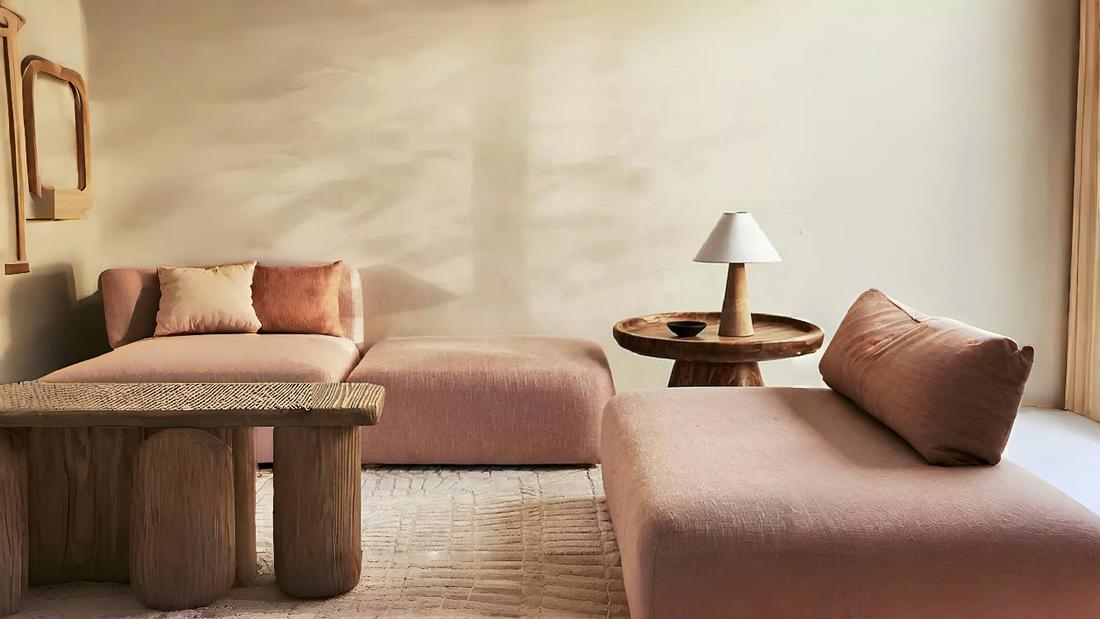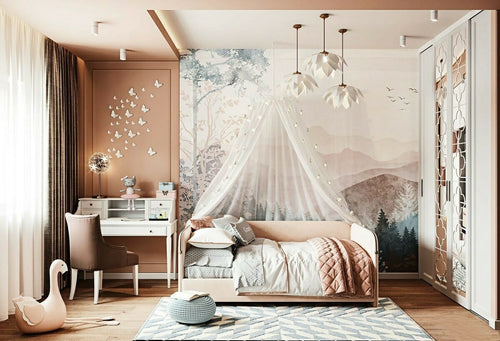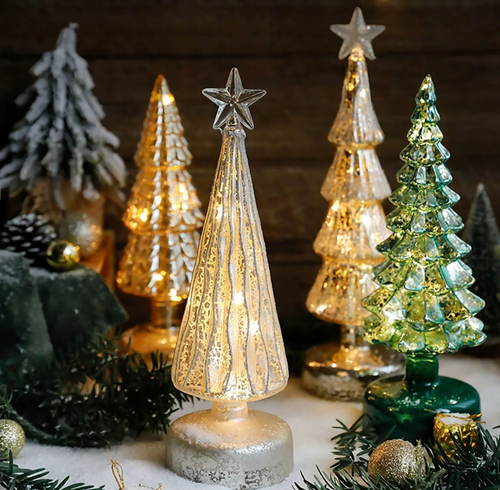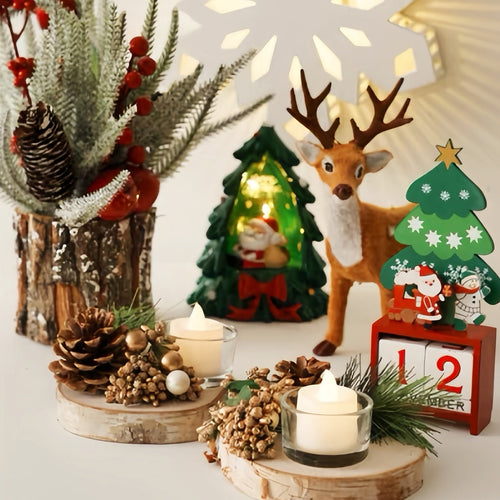Decorate your tiny home to reflect your personality and lifestyle. Incorporate unique accents, personal mementos, and framed photos to add warmth and character.
Choose multifunctional furniture that optimizes space. Convertible sofas, for example, fold into beds and free up floor space. Foldable tables and nested chairs also provide storage without sacrificing seating options.
Lighting and Ventilation
When designing for small spaces, lighting and ventilation are critical to maintaining a comfortable living environment. By incorporating natural light and adjustable fixtures, you can make even the smallest homes feel spacious and bright. Decorative wall sconces and other light fixtures also help draw the eye upward to create the illusion of height and openness. Lastly, unique decor and personal mementos can give each room its own personality and character.
Minimalist interior design focuses on optimizing functionality while maintaining a clean and elegant aesthetic, and it can be particularly effective in tiny homes. Rather than investing in furniture that requires a lot of floor space to function, choose multifunctional pieces that can fold up or slide against the wall when not in use. This allows for a flexible floor plan that maximizes storage and provides the best layout for your lifestyle.
Tiny spaces demand creative solutions to make the most of every square inch. By utilizing a combination of space-saving strategies, multifunctional furniture, and clever storage solutions, you can turn your tiny home into a cozy and comfortable place to call home.
Light Colors
Brighten up your tiny home with light colors that reflect light and make rooms appear larger. You can also opt for lighter finishes on your cabinets to create a sleek and modern aesthetic. Use accent colors sparingly to add color and flair without overwhelming your tiny space. Keeping a consistent color palette throughout your home also ensures that your décor and lighting complement each other effortlessly.
Ventilation
When designing your tiny home, it’s essential to incorporate proper ventilation to keep your home comfortable year-round. Installing fans that can circulate air throughout the house will help to keep temperatures and humidity levels balanced. You can also add skylights or a window seat to let in natural light and fresh air.
Adding a few plants to your home can improve air quality and reduce humidity levels. If you don’t have the space for a full-size plant, try installing an indoor hanging garden to bring in some greenery. For a touch of personality, display unique art or personal mementos on your shelves and mantels.
Space-Saving Strategies
Whether you live in a tiny apartment or a cramped cottage, you can’t afford to waste precious square footage. Rather than cluttering the room with large furnishings, look for smaller pieces that maximize storage and functionality. Nesting tables, folding chairs, and drop-leaf kitchen tables are all great options for small home spaces.
You can also free up floor space with furniture that features exposed legs. Unlike traditional couches and coffee tables, which hide the feet of the furniture underneath, these types of designs keep the room looking light and airy. They also offer the added benefit of letting you use an area behind a couch or table for display shelves and storage bins.

If you have a very low ceiling, opt for flush mount lights instead of hanging fixtures. These designs sit close to the ceiling, preventing you from losing valuable headroom. They’re ideal for small bedrooms, too. Look for models that feature a sleek, geometric design that fits your bedroom’s aesthetic or choose a semi-flush mount light fixture in warm, textured finishes like brass or rattan.
A classic interior design trick for small homes is to incorporate a lot of mirrors. This simple strategy reflects natural light and creates visual depth, boosting a room’s size. The same effect can be achieved with wall sconces, especially those with adjustable arms and swiveling heads. This allows you to direct the light as needed, creating a soothing atmosphere for reading or relaxing.
Lighting is one of the most important elements in any living room, but it’s doubly crucial for small rooms. Overhead fixtures can quickly overwhelm a tight layout, so it’s best to stick with minimal, modern styles. Wall sconces, flush mounts, and semi-flush mounts are the perfect choice for small areas with tighter budgets and limited headroom.
When choosing wall-mounted light fixtures for a small space, make sure the bulbs point upwards. This type of lighting opens up a room, allowing you to see more of its structure and defining its dimensions. Downlighters, on the other hand, cast light downwards to illuminate task areas, while also making a room feel cozier. It’s also a good idea to incorporate multiple layers of lighting in your home, using wall sconces for ambient illumination and table and floor lamps for accent lighting.
Accent Pieces
Living in a tiny home doesn’t have to mean sacrificing style or personalization. With the right design principles, it’s possible to maximize space and create a cozy, welcoming retreat that reflects your personality. Maximizing space begins with smart storage solutions that free up floor and table space. Consider collapsible or foldable furniture, like a sofa bed that doubles as a desk or a table that folds into the wall when not in use. Multifunctional furniture and wall-mounted features are also excellent ways to save space and increase functionality.
Another way to maximize space is through the use of light and color. Light-colored walls and ceilings make rooms appear bigger and more expansive, while contrasting color schemes add visual interest and warmth. Installing large windows, skylights, or glass doors can help to flood small spaces with natural light. Sheer curtains and window treatments allow daylight to enter your tiny home while maintaining privacy. Adding mirrors to your decor and home furnishings can further reflect light and amplify brightness.
Color plays a vital role in determining the perceived size of a room, and it is an easy way to add style to your tiny home. Warm, earthy tones such as beige and soft grays bring a sense of spaciousness while creating a cozy, inviting atmosphere. Cool, pastel shades of blue and green offer a soothing, open feel to small spaces.
Adding visual interest through accent pieces on the walls can also elevate a tiny home’s ambiance. Decorative accents like wall art, gallery walls, and tapestries can create a focal point that instantly grabs attention and adds charm to small homes.
A unique interior design feature that can add character to a tiny home is displaying a collection of meaningful items, like family heirlooms or travel souvenirs. Curating a display of these personal objects on open shelving or wall-mounted shelves can create an artistic touch that tells your story and makes the space feel more like home.
Finally, the smallest details can make all the difference in a tiny home. Small accents, such as vases, throw pillows, and table runners can transform your living space into a more vibrant, welcoming retreat.
Wall-Mounted Light Fixtures
A small home requires a carefully considered lighting design strategy. Layered lighting adds depth, dimension, and intrigue to any room. To maximize style and efficiency, choose lower-wattage fixtures like flush mounts or recessed lights to light areas that need brighter illumination such as countertops, shelving, and work surfaces. Decorative wall sconces, pendant lights, and other wall-mounted fixtures allow you to showcase your taste while saving floor space, especially when paired with dimmers for flexible mood lighting.

Accent lighting draws attention to architectural details, artwork, and shelving displays. This technique adds a focal point that elevates your tiny house into an inviting living environment for you and your guests. The natural materials used in tiny homes, such as wood, bamboo, and woven materials, can also be incorporated into lighting fixtures to add a cohesive aesthetic.
Multifunctional furniture, decor, and lighting elements optimize your tiny home’s layout, making it easier to live in limited square footage. For example, using a table or bookshelf as a lighting fixture frees up room for seating or storage and makes the piece more useful. You can even DIY your own lighting fixture with an old mason jar and a light bulb for a cost-effective and functional accent.
The color palette of your tiny home can also affect how bright and spacious it feels. Light colors reflect sunlight, while darker hues absorb it and cause rooms to feel smaller and darker. Use a light-colored paint or white shiplap to maximize the effects of your lighting scheme and encourage a more open, airy feel.
When it comes to designing a tiny home, planning is everything. Smart spatial planning includes maximizing vertical solutions, which lead to better livability for your family in a more compact home. This is why upper wall lighting is a game-changing solution for homeowners and renters who want to maximize space and style in tight rooms. These versatile fixtures flood overlooked corners, reduce clutter, and enhance visibility in cramped living spaces, all while maintaining compliance with ENERGY STAR standards.


















































